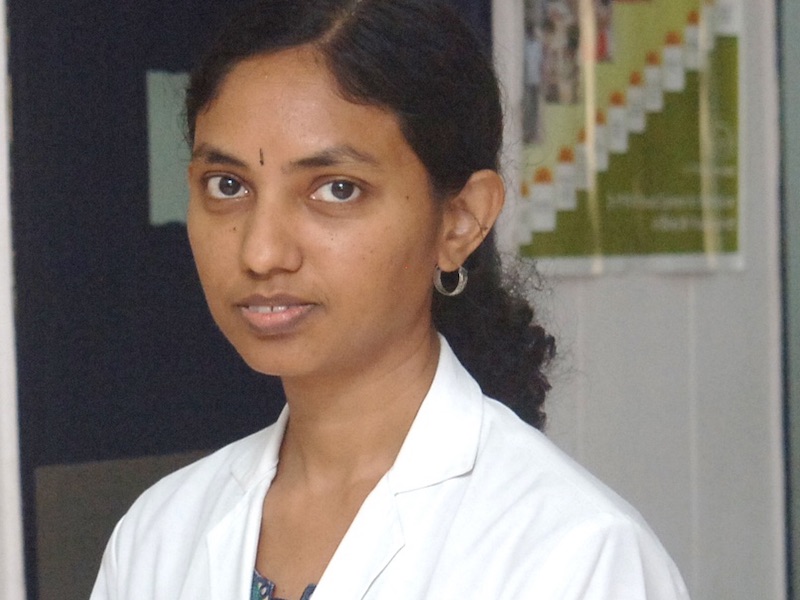
‘Many eye care professionals not aware about CBS, so the condition not frequently detected’
Dr PremNandhini Satgunam, Associate Research Optometrist, L V Prasad Eye Institute (LVPEI), Hyderabad, along with her colleagues, has done a study on Charles Bonnet syndrome (CBS), a condition in which individuals with visual impairment (VI) and with no cognitive deficits experience visual hallucinations, typically with no other sensory hallucinations.
In this interview, Dr Satgunam shares the study purpose, methodology, key findings and their implications for healthcare professionals.
What was the need or objective for doing this study?
India houses a large number of patients with visual impairment and blindness. Some of these conditions are acquired at a later age. For someone who always had good vision, if the vision drops suddenly, the usual brain region (visual cortex) responsible for vision now does not get enough stimulation, hence the brain may create “hallucinations”. This is similar to the famous “phantom limb” phenomenon explained by the University of California professor, Ramachandran. Patients with phantom limb will complain of pain in an arm that was already amputated. Similarly, in an eye that has reduced vision or is blind, the patient would now see some images (but they are not real).
If we don’t understand this hallucination phenomenon, these patients can get mislabelled as having some psychiatric problem. The difference between a real psychiatric problem and Charles Bonnet Syndrome (CBS) is that, in CBS, the patient knows the images they are seeing is not real, and the symptom will correlate well with the vision reduction. In real psychiatric conditions, the patient may believe the hallucinated images to be real and they may not have a vision problem.
Although few isolated case reports of CBS from India have been published, the prevalence for CBS in India is largely unknown. The primary aim of this study was to estimate CBS prevalence in patients with vision impairment visiting a tertiary eye care centre.
How is the CBS prevalence rate in India compared to other countries? Is it alarming?
The reference denominator is important when we talk about prevalence. The denominator is from the number of patients having visual impairment. Prevalence from our tertiary eye care centre is about 8% for CBS. We have done a larger population based screening in the state of Telangana and the prevalence for hallucination is slightly higher (unpublished data). If we can extrapolate this data to the whole country, we may be looking at the prevalence of CBS to be about 10-13%. Good literature exists from Europe and North America and the prevalence has varied from 11% to 63%, amidst those patients with visual impairment.
What was the study methodology? How did you reach this number? Where was this survey done? What was the sample size?
It was a prospective cross-sectional study. Our methodology and sample size was similar to a study that came out of Singapore. Our total sample size was 218. The survey was done at L V Prasad Eye Institute, Hyderabad.
The study was conducted in two phases. In phase 1, patients with visual impairment (VI), age ≥40 years with presenting visual acuity worse than 20/63 were enrolled. In phase 2, patients with presenting visual acuity worse than 20/63 and/or with binocular visual field loss, age ≥18 years were recruited. A CBS survey was administered only to those who passed a screening test for cognition impairment.
A total of 218 patients were screened (phase 1 = 113 and phase 2 = 105). Two‑hundred ten patients (mean age ± standard deviation = 49.2 ± 17.3 years, males = 139) were found eligible to complete the CBS survey. Fourteen patients were found to have visual hallucinations. In addition, three other patients had visual hallucinations with associated auditory input to the visual imagery. All patients had complete insight about their hallucinations.
Depending on the inclusion criteria, we found the prevalence for CBS in patients with VI to vary between 6.7% to 8.1% (if including patients with auditory input). More investigation is needed to assess the associated role of other sensory inputs (e.g. auditory) with the visual imagery experienced in CBS.
What are the implications of the study findings for doctors?
Many eye care professionals are not aware about CBS and therefore this condition is not frequently detected. Awareness about CBS is required for both patients with eye disorders and eye care professionals. Similarly, psychiatrists and neurologists should also be aware of this eye condition. As mentioned in the paper, it requires a multidisciplinary team of healthcare professionals to have a good understanding and manage these patients well, particularly in the older age group.
What are the latest advancements for treating this condition?
This condition is due to the visual impairment, then treatment of the vision condition is adequate (e.g. cataract surgery or low vision devices to improve vision) to reverse this condition. But arriving at the correct diagnosis is important. Proper counselling would be a huge stress-relief for the patient.
What work LVPEI is doing to tackle this disorder?
We have increased awareness for this condition by implementing awareness of this condition in our teaching and training curriculum. We also have kept information pamphlets in different languages (Telugu, Hindi and English) in our clinics for low vision and geriatric care.
What would be your next course of action after getting the study findings?
Increase awareness for patients and for professionals as indicated above. We have a large public eye health division and several initiatives. Presently in our institute, a group led by Dr Srinivas Marmamula is looking at improving eye care for elderly in old age homes. Knowing about CBS will be helpful in managing this group of people as well.
